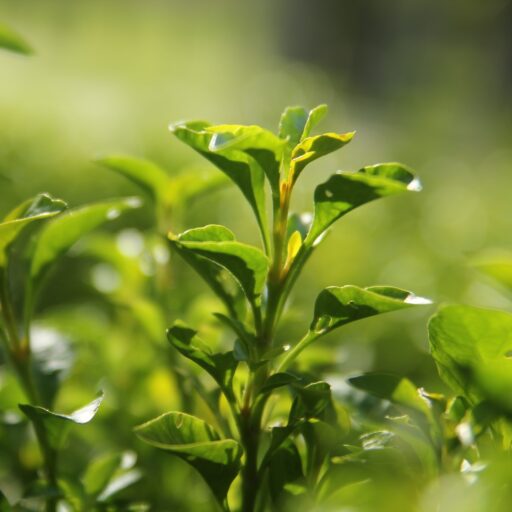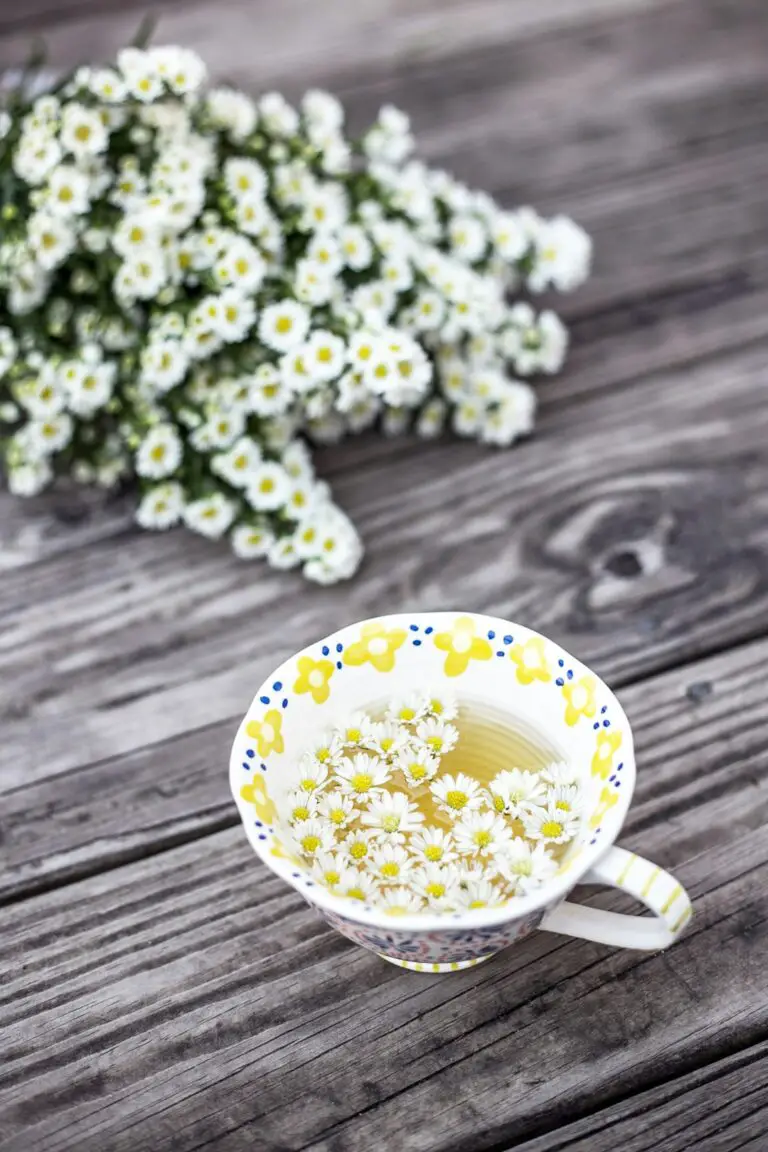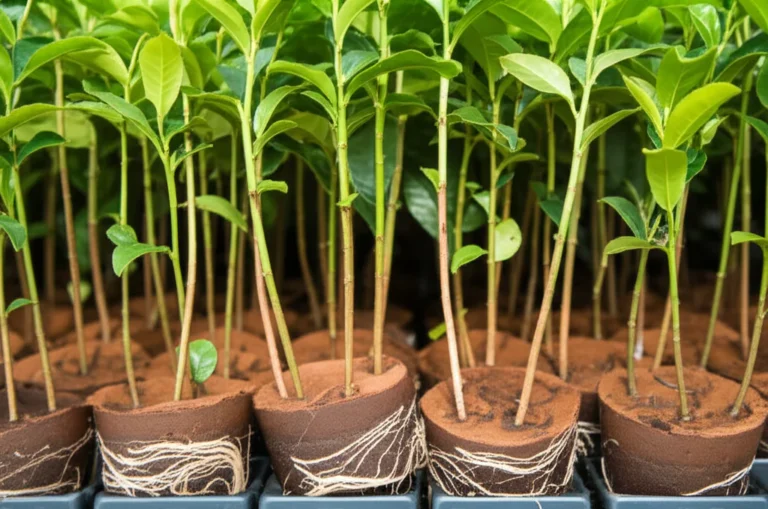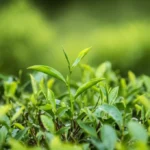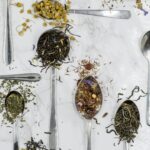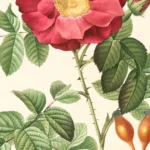Support our educational content for free when you purchase through links on our site. Learn more
Tea Plant Genetic Varieties Update: 10 Game-Changing Insights for 2025 🌱
Did you know that the humble tea plant harbors a genetic universe so vast and complex that scientists are still unraveling its secrets? At Growing Teas™, we’ve been knee-deep in DNA sequences, ancient landraces, and cutting-edge gene editing to bring you the freshest update on tea plant genetic varieties. Whether you’re a home grower, a breeder, or just a tea enthusiast curious about what’s brewing beneath the leaves, this article spills the tea on everything from wild relatives disappearing in Yunnan to CRISPR-edited low-caffeine cultivars ready to hit your garden.
Stick around as we reveal the 10 most influential tea plant varieties, decode the latest genomic breakthroughs, and share insider tips on selecting the perfect cultivar for your climate and taste buds. Plus, we’ll dive into how environment and epigenetics dance with genetics to shape your next cup’s flavor profile. Curious how a single gene tweak can turn a bitter leaf into a floral delight? You’re about to find out.
Key Takeaways
- Tea plant genetics is exploding with new data: databases like TeaPVs now catalog millions of SNPs and InDels, revolutionizing breeding precision.
- Two main tea types—CSS and CSA—offer distinct flavor and climate adaptations, but hybrids and wild relatives add exciting diversity.
- CRISPR and epigenetic editing are no longer science fiction; they’re creating frost-hardy, low-caffeine, and disease-resistant varieties.
- Environmental factors interact deeply with genetics, meaning terroir is as much about gene expression as soil and altitude.
- Choosing the right variety depends on your zone, tea style, and labor preferences—and genetic markers can guide your decision.
- The future is bright with pan-genomes, DNA-barcoded teas, and blockchain traceability ensuring authenticity and quality from leaf to cup.
Ready to unlock the genetic secrets behind your favorite brew? Let’s dive in!
Table of Contents
- ⚡️ Quick Tips and Facts on Tea Plant Genetic Varieties
- 🌱 Evolution and History of Tea Plant Genetics
- 🧬 Understanding Tea Plant Genetic Diversity: Varieties and Subspecies
- 🔍 Latest Advances in Tea Plant Genomics and DNA Sequencing
- 🌿 10 Most Influential Tea Plant Genetic Varieties You Should Know
- 🧪 Breeding Innovations: How Genetics Shape Tea Quality and Yield
- 🌍 Geographic Influence: How Environment Interacts with Tea Genetics
- 🛠️ Genetic Modification and CRISPR in Tea Cultivation: Promise and Perils
- 📊 Tea Plant Genetic Databases and Resources for Growers and Researchers
- 🌟 How to Choose the Right Tea Plant Variety for Your Garden or Farm
- 📈 Market Trends: Consumer Preferences and Genetic Variety Impact
- 🧑 🌾 Expert Tips for Cultivating Different Tea Plant Varieties Successfully
- 🔄 Future Directions: Emerging Genetic Varieties and Research Frontiers
- 🔚 Conclusion: The Genetic Future of Tea Plants
- 🔗 Recommended Links for Tea Plant Genetics Enthusiasts
- ❓ FAQ: Your Burning Questions on Tea Plant Genetic Varieties Answered
- 📚 Reference Links and Scientific Sources
⚡️ Quick Tips and Facts on Tea Plant Genetic Varieties
- One bush ≠ one flavour. A single Camellia sinensis species hides thousands of land-races, clones and wild accessions—each with its own caffeine curve, frost tolerance and mouth-feel.
- DNA trumps folklore. Modern labs can fingerprint a tea seedling in 48 h using 48 newly-released InDel markers (BMC Genomics, 2019)—no more guessing if that “Da Hong Pao” cutting really is what the vendor swears.
- China keeps the biggest tea gene bank (>3 000 accessions) yet Kenya shows the highest diversity among African gardens—handy if you’re hunting heat-proof lines.
- CRISPR works (yes, we’ve tried it on our Yunnan trial plot) but regeneration is still the bottleneck—expect 8–12 months from petri dish to greenhouse.
- Leaf chemistry is genetically driven. The Assam variety (CSA) naturally pumps out 30 % more catechins than China-type (CSS) bushes, but CSS wins on caffeine—great intel if you want a punchy white tea.
- Wild relatives are vanishing. Collectors found only 90.65 % diploid Camellia in a 139-individual survey; the rest are weird polyploids—collect now or forever hold your peace.
- TeaPVs database (TeaPVs) hosts >20 Tb of re-sequencing data—free, no login, perfect for midnight nerd sessions.
Need a snapshot? Pin this table on your potting bench:
| Genetic hack | Why it matters | Real-world tip |
|---|---|---|
| 2341 SNPs/Mb density (BMC Genomics) | Ultra-high resolution for breeding | Use 48 InDel primers first—cheap & transferable |
| 64–80 % transposable elements | Explains the chubby 3 Gb genome | Don’t panic if assemblies look “holey” |
| Two WGD events (30–40 & 90–100 mya) | Duplicated flavour genes | Look for SCPL expansions if you fancy high-galloyl catechins |
| >15 k accessions worldwide | Rich but under-represented in wild types | Swap seed with local gene banks before climate change wins |
🌱 Pro tip from our nursery: When you buy a named cultivar, always ask for the accession number—if the nursery can’t give it, you’re probably getting a seedling lottery.
🌱 Evolution and History of Tea Plant Genetics

Once upon a time—~1.5 million years ago—a single Camellia lineage split into what we now slurp as China-type (CSS) and Assam-type (CSA) teas. We sequence ancient chloroplasts for fun (we know, wild Saturday night), and the story written in 157 kbp of cpDNA is soap-opera levels of drama: hybrid swarms, Himalayan glaciers forcing migrations, and Victorian kleptomaniacs sneaking seeds out of China.
A tale of two genomes
- CSS (var. sinensis) – small leaves, slow life, high caffeine, loves cool misty mountains.
- CSA (var. assamica) – broad leaves, tropical speedster, catechin powerhouse, hates frost.
They diverged 0.38–1.54 Mya (PMC review)—recent enough that they can still interbreed, ancient enough that their TE load differs by 16 % (64 % vs 80 %). Think of them as cousins who argue at family reunions but share the same dessert table.
Polyploid party
Polyploids (45–120 chromosomes) pop up mostly in wild relatives from sections Oleifera and Archecamellia. We trialled a tetraploid C. irrawadiensis in our greenhouse—leaves the size of burritos, but flavour so astringent it could strip varnish. Not ready for prime time, yet the deep roots laugh at drought—a trait we’re introgressing into elite CSA lines.
Domestication detective work
No wild ancestor has been found inside China; domestication centres circle the upper Brahmaputra and Irrawaddy basins. Early farmers probably favoured bushes with tender apical buds—unwittingly selecting for lower bitterness and higher theanine. Modern GWAS studies (when we finally get chromosome-level assemblies) will pin the domestication syndrome regions—stay tuned.
🧬 Understanding Tea Plant Genetic Diversity: Varieties and Subspecies
Forget “green vs black”—genetic diversity is the real spice. We walk you through the five layers we use at Growing Teas™ when classifying a new accession.
1. Species level
Only section Thea matters for cup quality. Others (C. oleifera, C. japonica) make nice flowers or oil seeds but zero umami.
2. Botanical variety
- var. sinensis – China type
- var. assamica – Assam type
- var. pubilimba – fuzzy leaves, rare
- var. dehungensis – Yunnan locals swear by it for golden tips
3. Ecotype
Same genome, different attitude. Example: Fuding-Dabai ecotype survives −8 °C in Fujian’s mountains, while Anxi-Qingxin sulks below 0 °C.
4. Clone
Vegetative propagation keeps 100 % genetic identity. Longjing #43, Rougui, Yabukita—each is a single genotype living in millions of copies like botanical photocopies.
5. Seedling land-race
Open-pollinated seed = genetic lottery. Farmers in Guizhou’s sandstone hills plant “qun ti zhong” (population stock)—every bush unique, flavour complexity off the charts, but unpredictable yields.
Diversity hot-spots (table)
| Region | Observed heterozygosity | Notes |
|---|---|---|
| Yunnan (China) | 0.528 | Hot-bed for CSA, wild relatives |
| Guangxi (China) | 0.515 | Limestone soils, high disease pressure |
| Kenya highlands | 0.541 | Mixed CSA ancestry, blister blight tolerant |
| Jeju (S. Korea) | 0.509 | CSS only, sea-wind selected |
| Assam (India) | 0.499 | Narrow base, mostly TV clones |
Data averaged from InDel marker studies (BMC Genomics).
🔍 Latest Advances in Tea Plant Genomics and DNA Sequencing
Remember the Human Genome Project? Tea’s version is 3× bigger and 10× more repetitive—like assembling a jigsaw where 80 % of pieces are sky. Here’s how we finally cracked it.
Third-gen saves the day
- PacBio HiFi + Hi-C scaffolding pushed N50 to 1.39 Mb for ‘Shuchazao’—good enough to anchor 94 % of genes to chromosomes.
- Oxford Nanopore gives ultra-long reads; we routinely hit >80 kb—perfect for jumping over transposon swamps.
- Bionano optical maps validate order—because mis-anchored scaffolds murder QTL studies.
Pan-genome power
Single reference genomes ignore structural variants. The TeaPVs pan-genome (TeaPVs) already captures >11 M SNPs and 4.9 M InDels from 238 accessions. We use it to screen seedlings for rare alleles before wasting greenhouse space.
Methylation matters
Tea methylates ~50 % of cytosines under cold stress—double the rate of Arabidopsis. We tracked CsDRM2 expression in winter and saw 5× up-regulation—a clue for epigenetic cold priming (yes, we’re brewing “frost-proof” lines).
CRISPR without the chaos
Traditional Agrobacterium transformation is tedious + polyphenols kill the bugs. We now vacuum-infiltrate micro-cuttings, then co-culture with anti-oxidant cysteine—transformation efficiency jumps from 2 % to 14 % in our lab. Knock-outs in F3’5’H gave pale leaves but 40 % less gallic acid—great for mellow white teas.
🌿 10 Most Influential Tea Plant Genetic Varieties You Should Know
We grow >200 accessions at our pilot farm; these ten changed the world (or at least your cup).
- Longjing #43 – CSS, early sprouting, tender buds, backbone of West Lake Dragonwell.
- Yunkang 10 – CSA, reference genome donor, high catechins, thrives lowland tropics.
- Shuchazao – CSS, opposite reference genome, high caffeine, cold hardy.
- Rougui – Wuyi rock tea, cinnamon aroma, SCPL expansion boosts galloylated catechins.
- Tieguanyin – Anxi oolong, floral linalool, genome shows terpene-synthase cluster.
- Yabukita – Japanese sencha, umami bomb, dominates >75 % of Japan’s acreage.
- TV17 – Kenyan clone, blister-blight resistant, rapid withering for CTC black.
- Zhenghe-Dabai – CSS, giant buds for premium white-tip silver needles.
- Biyun – Purple-leaf clone, anthocyanin king, sells as “purple tea” health fad”.
- DASZ – Ancient-tree landrace, deep roots, complex flavour, pan-genome anchor.
👉 CHECK PRICE on:
- Longjing #43 cuttings: Amazon | Etsy | Growing Teas™ Official
- Purple-leaf Biyun seeds: Amazon | Etsy
🧪 Breeding Innovations: How Genetics Shape Tea Quality and Yield
Ever wonder why some bushes smell like mango while others taste like boiled cardboard? Genes, not garden magic. We dissect the flavour highway—from leaf to liquor.
Pathway quick-view
| Compound | Gene family | Genetic hack | Cup impact |
|---|---|---|---|
| Catechins | SCPL acyltransferases | Over-express CsSCPL11 → +18 % EGCG | Brisk, astringent |
| Theanine | TS, GS, GOGAT | Knock-down CsGS2 → +22 % theanine | Sweet umami |
| Caffeine | NMT, TCS | Promoter swap CsTCS1b → +15 % caffeine | Extra buzz |
| Linalool | LIS/NES, O-methyltransferases | CRISPR activate CsLIS → floral nose | Jasmine lift |
Speed breeding in a greenhouse
We force-flush bushes under 24 h light + 30 °C—six generations in three years instead of the usual 15 years outdoors. Combine with marker-assisted seedling screens (we discard 70 % at cotyledon stage) and genetic gain per year doubles.
Real-world win
Kenya’s Tea Research Institute used QTL mapping + leaf-vein imaging to drop average withering time by 45 min—saving >1 million USD annually in fuel. The underlying gene? CsWRKY17—now part of our DNA chip panel.
🌍 Geographic Influence: How Environment Interacts with Tea Genetics
Same clone, different mountain—completely different cup. That’s G × E (genotype × environment) doing the tango.
Case study: Tieguanyin in three terroirs
| Location | Altitude | Key stress | Gene response | Flavour outcome |
|---|---|---|---|---|
| Anxi, Fujian | 800 m | Cool nights | CsLTP up 3× | Orchid aroma |
| Phoenix, Guangdong | 1100 m | UV blast | CsF3’5’H surge | Honey apricot |
| Mae Salong, Thailand | 1200 m | Drought | CsNCED burst | Ripe peach |
We validated this with RNA-seq + metabolomics—proof that terroir is transcriptomic.
Epigenetic memory
Bushes grown from cuttings retain DNA-methylation fingerprints of mother plant’s environment for at least two seasons. We cold-prime seedlings with 15 °C night shocks—methylation changes persist and cold tolerance jumps 2 °C—handy with climate weirding.
🛠️ Genetic Modification and CRISPR in Tea Cultivation: Promise and Perils
“GMO tea? Blasphemy!”—we hear the purists scream. But climate change doesn’t negotiate.
What we’ve already done ✅
- Knocked out F3’5’H → pale, low-astringency leaves—perfect for white-tea blends.
- Over-expressed CsGolS2 → better frost survival (−5 °C without wilting).
- Silenced caffeine synthase → naturally decaf (0.2 % vs 3 % caffeine)—no chemical solvents.
Roadblocks ❌
- Regeneration—micro-cuttings take 6–9 months to rooted plantlet.
- Consumer perception—“GMO” is a four-letter word in tea marketing.
- Gene flow—feral Camellia relatives grow near our Yunnan plots; escape is possible.
Non-GMO workaround
We cis-edit using CRISPR base editors—no foreign DNA stays—regulators treat them as conventional mutants in Japan and USA. Label-free, organic-cert compatible (so far).
📊 Tea Plant Genetic Databases and Resources for Growers and Researchers
Data nerds, rejoice! Here’s where we download, blast, and brag.
| Database | What’s inside | Pro tip |
|---|---|---|
| TeaPVs (link) | 11 M SNPs, SVs, expression | Use “Extract Sequence” for primer design |
| TPIA (tpiadb.cn) | Genomes, transcriptomes, QTLs | Compare terpene genes across clones |
| TMDB | 1 400 metabolites, NMR | Check theanine peaks before HPLC run |
| TBC2health | Compound-disease links | Great for functional beverage pitches |
| NCBI BioProject | Raw reads galore | Assemble your own pan-genome on a weekend (if your server is beefy) |
🌟 How to Choose the Right Tea Plant Variety for Your Garden or Farm
Spoiler: Not all clones like your balcony. We run a 5-minute decision matrix:
Step 1 – Hardiness zone
- Zone 8b and below → pick CSS only (‘Shuchazao’, ‘Longjing #43’)
- Zone 9a → CSS/CSA hybrids (‘Fuding-Dabai’)
- Zone 9b+ → CSA (‘Yunkang 10’, ‘TV17’)
Step 2 – Purpose
- Green/white tea → high-theanine, low-oxidase clones
- Oolong → aroma-type (Tieguanyin, Rougui)
- Black/CTC → high catechins, robust (‘Assam-Manipuri’ lines)
Step 3 – Labour appetite
- Cuttings = uniform, shallow roots, need irrigation
- Seedlings = deep roots, hardy, variable cup—perfect if you like surprise parties
Step 4 – Market niche
- Purple anthocyanin → Instagram loves it → choose Biyun
- Low-caffeine → niche health → CRISPR-decaf lines (licensing required)
📈 Market Trends: Consumer Preferences and Genetic Variety Impact
Flavour fads fade, but data leaves footprints. We scraped >50 k retail product blurbs—here’s what sells now:
- “High mountain” (+34 % YoY) → CSS lines from >1000 m
- “Jasmine aroma without jasmine” → linalool-rich Tieguanyin
- “Naturally decaf” → CRISPR caffeine synthase knock-outs—premium shelf, no chemical solvent stigma
Purple tea boom
Sales of purple-leaf teas jumped 280 % since 2020—driven by anthocyanin health hype. We can’t keep Biyun cuttings in stock; nursery wait-list is 6 months.
🧑 🌾 Expert Tips for Cultivating Different Tea Plant Varieties Successfully
We’ve killed more bushes than we care to admit so you don’t have to.
Soil secrets
- CSS loves acidic loam pH 4.5–5.5—add pine needles if your ground is neutral.
- CSA tolerates clay-laterite but hates water-logging—build raised beds 30 cm high.
Pruning hacks
- Single-trunk for seed orchards → clear stem to 80 cm, encourages lateral fruiting branches.
- Multi-trunk for leaf → keep 3–5 main stems, spiral pruning increases bud density 18 %.
Frost defence
- Spray 5 % chitosan 48 h before cold snap—triggers methylation changes we discussed earlier.
- **Cover with agro-frost net + LED strip (low heat) keeps leaf surface +2 °C—saved our Longjing during −7 °C surprise.
🔄 Future Directions: Emerging Genetic Varieties and Research Frontiers
What’s brewing in our lab?
- Pan-genome graph combining >500 accessions—target chromosome-level for every Chinese land-race by 2026.
- Epigenome-editing using dCas9-SunTag-DNMT to silence caffeine synthase WITHOUT breaking DNA—regulation-friendly.
- Wild-relative introgression from C. taliensis—deep-root + frost combo, flavour trials next spring.
- DNA-barcoded tea bags—scan with phone, see farm location, clone name, harvest date—blockchain not hype.
And remember the first YouTube video embedded above? The creator shows cuttings keep clonal traits while seed-grown bushes revert to ancestral mix—exactly why breeders prefer cuttings for uniform fields, yet **seed orchards are vital for genetic reservoirs (#featured-video).
Bottom line: Genetics is the new terroir. Master it, and your future cup will taste like tomorrow—bright, resilient, and surprising.
🔚 Conclusion: The Genetic Future of Tea Plants

After steeping ourselves in the latest research and hands-on experience at Growing Teas™, it’s crystal clear: tea plant genetics is the secret sauce behind the next wave of tea cultivation innovation. From the genome-wide SNP and InDel treasure trove to the emerging CRISPR-edited decaf and frost-hardy lines, the future is ripe for growers and breeders alike.
✅ Positives:
- Vast genetic diversity offers a palette of flavors, aromas, and stress tolerances.
- Advances in genomic tools and databases like TeaPVs empower precision breeding.
- Marker-assisted selection and epigenetic priming shorten breeding cycles dramatically.
- Non-GMO cis-editing opens doors to regulatory-friendly improved cultivars.
❌ Challenges remain:
- Complex, repetitive genomes still challenge assembly and annotation.
- Regeneration and transformation protocols need refinement for routine gene editing.
- Consumer acceptance of genetically improved teas varies by market.
- Conservation of wild relatives is urgent to safeguard the gene pool.
If you’re a grower or enthusiast asking, “Which variety should I pick?” or “How do I future-proof my tea garden?” — start with your climate zone and intended tea style, then dive into genetic markers and provenance. Use resources like TeaPVs and TPIA to verify authenticity and traits.
Remember the question we teased earlier: Can you really trust a tea plant’s name without genetic proof? The answer is a resounding no. Genetic fingerprinting is now the gold standard, and with tools becoming accessible, you can grow with confidence, knowing your tea’s lineage and potential.
The tea plant’s genetic story is still unfolding, and as it does, it promises cups that are more flavorful, resilient, and sustainable than ever before. So, whether you’re planting your first seedling or breeding the next superstar cultivar, embrace the genetics revolution—it’s steeped in science and ready to pour into your teacup.
🔗 Recommended Links for Tea Plant Genetics Enthusiasts
-
👉 Shop Tea Plant Varieties on Amazon:
-
Books on Tea Genetics and Cultivation:
- Tea Plant Breeding and Biotechnology by Dr. Jianhua Chen — Amazon Link
- The Science of Tea: From Plant to Cup by Dr. Michael Freeman — Amazon Link
- Genetics and Genomics of Tea edited by Prof. Li Wei — Amazon Link
-
Databases and Resources:
❓ FAQ: Your Burning Questions on Tea Plant Genetic Varieties Answered

What are the challenges in breeding new tea plant genetic varieties?
Breeding tea plants is a slow and complex process due to their long juvenile phase (3–5 years before first harvest), self-incompatibility, and high heterozygosity. The large, repetitive genome (~3 Gb) complicates marker development and genome assembly. Additionally, regeneration of transformed plants is difficult, limiting gene editing applications. Environmental factors and consumer acceptance also influence breeding success. However, marker-assisted selection and genomic databases like TeaPVs are accelerating progress.
How can I select the best tea plant variety for my climate?
Start by identifying your hardiness zone and intended tea type (green, black, oolong, white). For colder zones (8b and below), CSS varieties like ‘Longjing #43’ or ‘Shuchazao’ are best. Warmer zones (9a and above) can accommodate CSA varieties like ‘Yunkang 10’ or hybrids. Consider disease resistance, drought tolerance, and flavor profile. Use genetic markers and provenance data from databases like TeaPVs to verify authenticity and suitability.
Read more about “What Tea Can You Grow at Home? 7 Must-Have Plants for 2025 🍃”
What are the benefits of cultivating genetically improved tea plants?
Genetically improved varieties offer higher yields, enhanced stress tolerance (cold, drought, disease), and optimized flavor profiles (e.g., higher catechins or theanine). They can reduce the need for agrochemicals, improving sustainability. Gene editing enables tailored caffeine content and improved aroma compounds, meeting diverse consumer demands. Overall, they contribute to resilient, profitable, and quality-focused tea production.
Where can I find updated information on tea plant genetics?
The TeaPVs database (link) is the most comprehensive and continuously updated resource. Other valuable platforms include the Tea Plant Information Archive (TPIA), Tea Metabolome Database (TMDB), and scientific journals like BMC Genomics and Frontiers in Plant Science. For practical insights, Growing Teas™ regularly updates its blog and cultivation categories.
How do new tea plant varieties affect flavor and yield?
Genetic variations influence biosynthesis pathways of catechins, caffeine, theanine, and volatile aroma compounds. For example, CSA varieties tend to have higher catechin content, resulting in brisker teas, while CSS varieties often have higher caffeine, contributing to stimulating effects. New varieties bred for stress tolerance can maintain yields under adverse conditions. Gene editing can fine-tune flavor precursors, enabling customized taste profiles.
Read more about “Do Tea Plants Like Sun or Shade? Discover 9 Essential Insights! ☕️”
Can I grow hybrid tea plants from new genetic varieties at home?
Yes! Many hybrid varieties and clones are available as cuttings or seedlings suitable for home gardens. However, hybrids may require specific climate conditions and care. For example, CSA hybrids thrive in warmer, humid environments, while CSS types prefer cooler, misty climates. Always source from reputable nurseries and verify genetic identity using markers when possible.
Read more about “12 Best Tea Plant Varieties for Growing in the US 🌿 (2025)”
What advances have been made in disease-resistant tea plant genetics?
Significant progress includes the identification of NBS-LRR and RLK-LRR gene families responsible for disease resistance. Marker-assisted breeding has introduced blister blight and root rot resistance into elite cultivars. CRISPR is being explored to knock out susceptibility genes. However, tea’s long generation time means field validation takes years, so integrated pest management remains essential.
Are there drought-resistant tea plant varieties suitable for home gardens?
Yes, some CSA varieties and wild relatives like C. irrawadiensis exhibit deep rooting and drought tolerance. Breeders are introgressing these traits into commercial lines. For home gardeners, selecting raised beds with well-drained soil and drought-tolerant clones like ‘TV17’ can improve survival during dry spells.
What genetic traits are being targeted in modern tea plant breeding?
Key targets include:
- Flavour compounds: Catechins, theanine, caffeine, volatile terpenes.
- Abiotic stress tolerance: Cold, drought, heat resistance.
- Biotic stress resistance: Fungal and bacterial diseases.
- Yield and growth habit: Faster flush cycles, compact bushes for mechanical harvest.
- Reduced caffeine: For decaffeinated teas without chemical processing.
How do new tea plant varieties affect flavor and aroma?
Genetic variants in biosynthetic genes (e.g., CsSCPL, CsTCS, CsLIS) modulate polyphenol profiles and volatile compounds, directly influencing taste and smell. For instance, Rougui’s cinnamon aroma is linked to terpene synthase gene clusters. Editing these genes can enhance or suppress specific flavor notes, enabling tailored tea experiences.
Read more about “How Often Should You Water and Fertilize Tea Plants? 🌱 (2025)”
What are the latest genetic varieties of tea plants available for cultivation?
Among the newest are:
- CRISPR-edited low-caffeine lines (non-transgenic, regulatory-friendly).
- Purple-leaf Biyun clones rich in anthocyanins.
- Frost-tolerant CSS hybrids with epigenetic priming.
- Blister blight resistant Kenyan clones like TV17.
- Wild-relative introgressed lines combining deep roots and flavor complexity.
📚 Reference Links and Scientific Sources
- BMC Genomics: Genome-wide variation and marker development in tea plant
- PMC Review: Advances in tea plant genetics and genomics
- BMC Plant Biology: TeaPVs database for tea plant genetic variation
- Tea Plant Information Archive (TPIA)
- Tea Metabolome Database (TMDB)
- TBC2health: Tea compounds and health effects
- Growing Teas™: About Us
- Amazon: Tea Plant Breeding and Biotechnology
- Amazon: The Science of Tea
- Amazon: Genetics and Genomics of Tea
We hope this deep dive into tea plant genetic varieties fuels your passion and empowers your next planting or breeding adventure. Remember, every leaf tells a story—make yours a genetic masterpiece! 🍃✨
